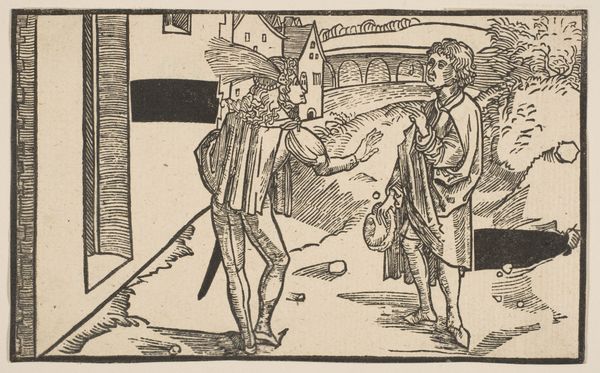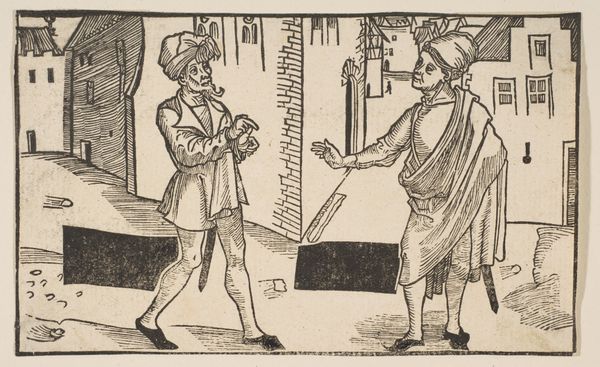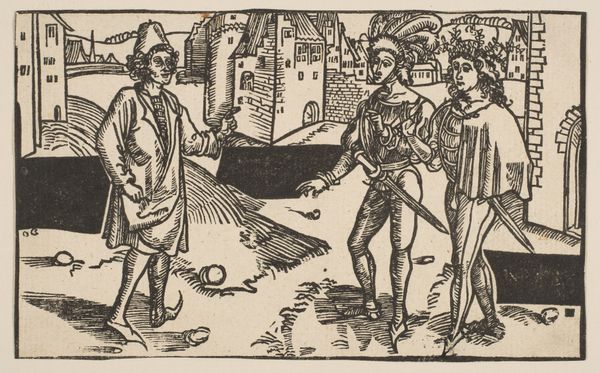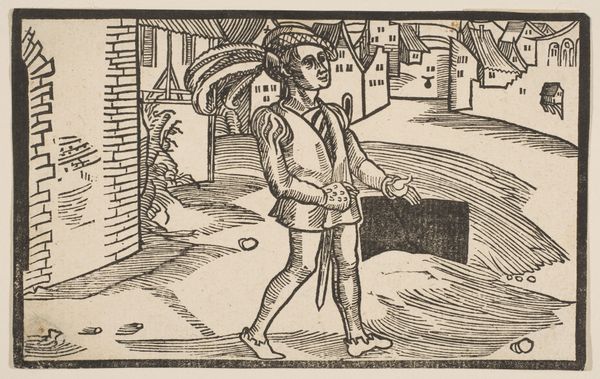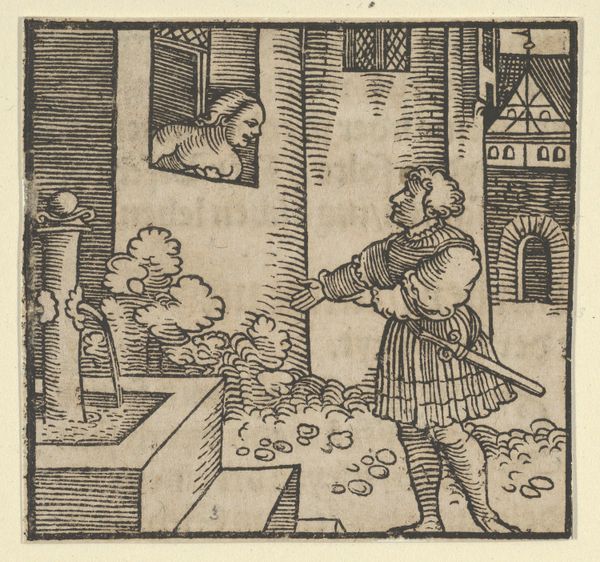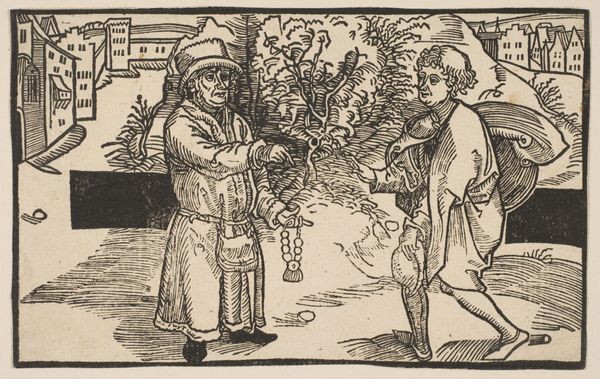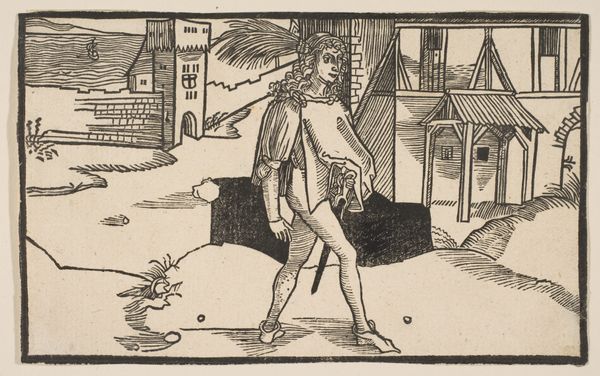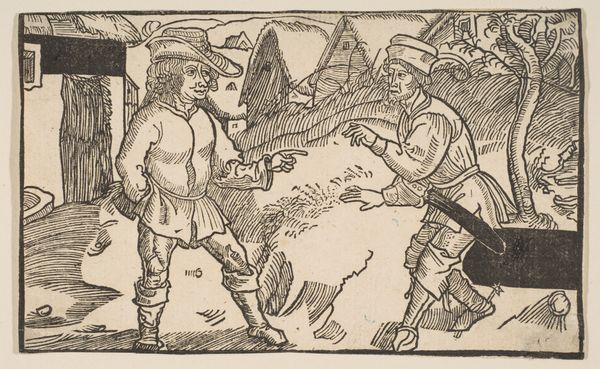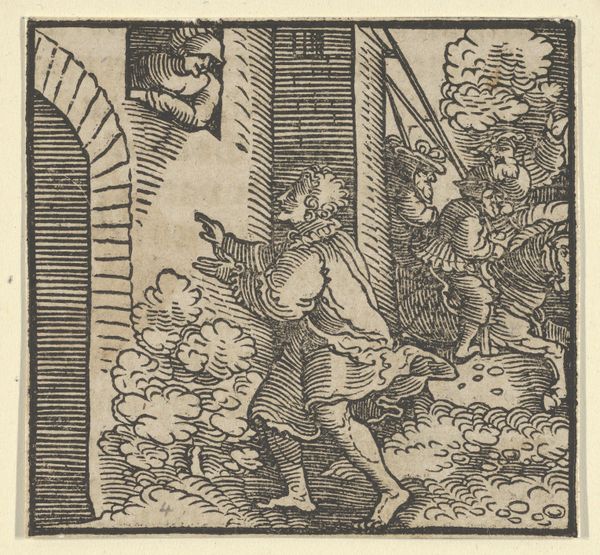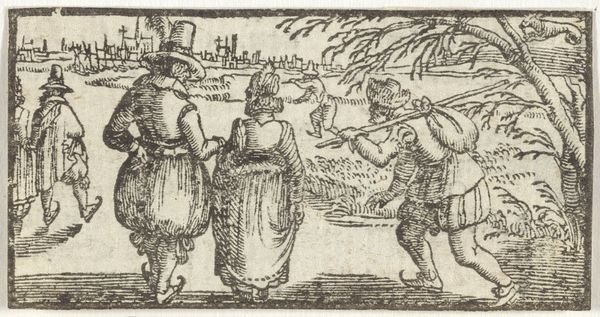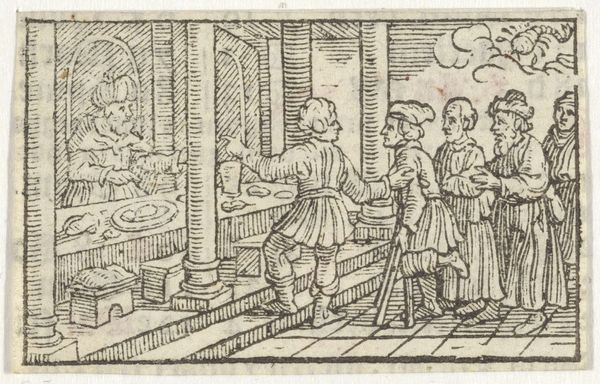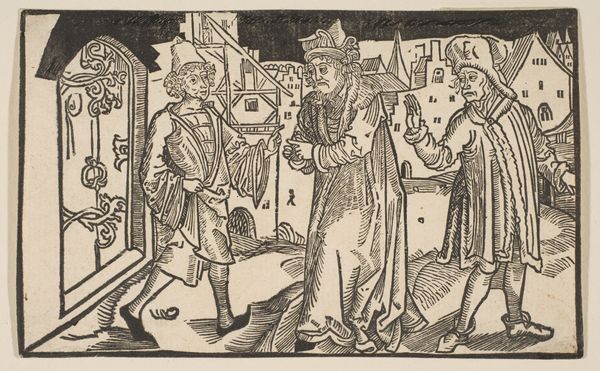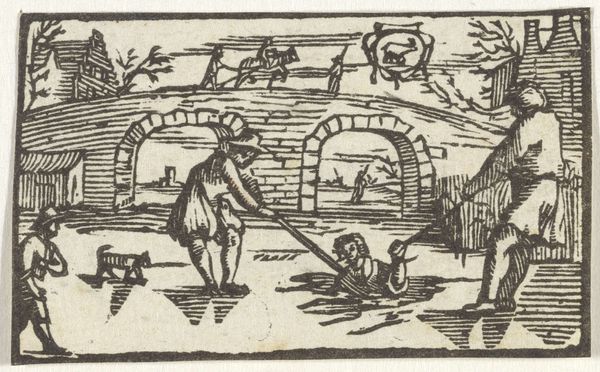
Eunuchus, from The Comedie of Terence, 19th century reprint 1485 - 1528
0:00
0:00
drawing, print, woodcut
#
drawing
#
medieval
# print
#
landscape
#
figuration
#
woodcut
Dimensions: sheet: 3 1/2 x 5 5/8 in. (8.9 x 14.3 cm)
Copyright: Public Domain
Editor: This is a woodcut print titled "Eunuchus, from The Comedie of Terence" made sometime between 1485 and 1528 by Albrecht Durer. There is a lone figure in a landscape. I'm immediately struck by how stark and detailed the buildings in the background are in comparison to the main figure. What jumps out at you? Curator: What I see here is a reflection of deeply ingrained social hierarchies made visible through visual representation. The figure, presumably the "eunuchus", is placed within a structured environment, yet feels strangely isolated. Notice how the built environment almost cages him. How might his identity, so specifically labelled, position him within the social context of the time, and how does that manifest visually in the piece? Editor: It seems like he is quite literally stuck between a rock and a hard place. But what do you mean by hierarchies made visible? Curator: This print serves as a visual document, subtly reinforcing societal norms while simultaneously othering the figure. How does the artist's choice of isolating him within this scene –almost a stage – comment on the power structures at play in labeling and marginalizing individuals? The concept of "eunuch" historically intersects with notions of gender, power, and social status. Do you think that Albrecht Durer intended this as an exploration or an affirmation of those power dynamics? Editor: I hadn't thought of it that way before. I initially just saw the setting as scenery, but now I understand it’s integral to the figure's social positioning. It’s interesting to consider the complexities behind what I thought was just a portrait in a landscape. Curator: Exactly! This image allows us to excavate some of those complex power dynamics through visual language. I wonder how different audiences, both historically and today, would respond to this figure and his context.
Comments
No comments
Be the first to comment and join the conversation on the ultimate creative platform.
